More about lightest bullets suitable for the venerable 7×66 Vom Hofe
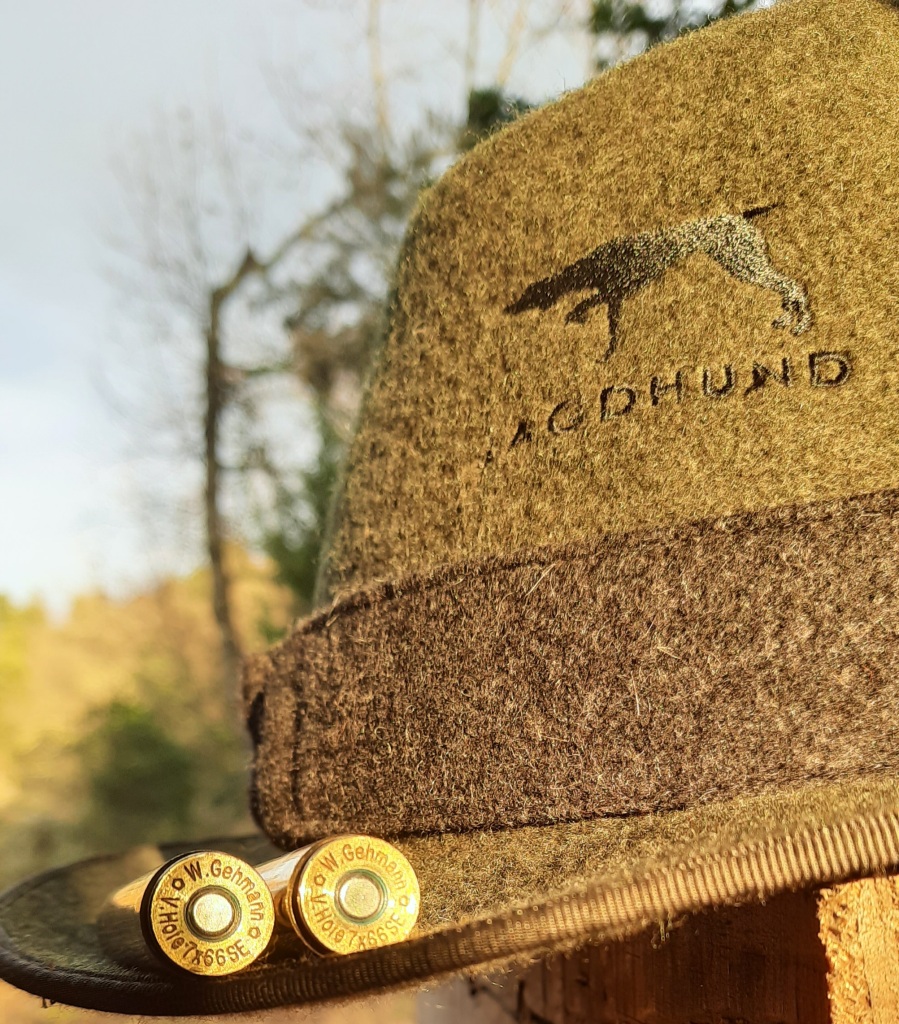
Although many consider this outstanding caliber obsolete, stale and even dead, we have seen growing interest by handloading enthusiasts and numerous Central European hunting culture admirers over the years. The article we published on this blog an year ago had such an echo to convince us that not everything, perhaps, had been said, tried and shared.
For seasons I used bullets that could guaranteed penetration and energy dump on large games due theyr structure and weight. The previous study was mostly focused on 160 and 175 grain ogives. Although caliber’s high intensity allows them to work exemplarly, recoil is undeniably vigorous and trajectories penalized in flatness. If we add that the bitchy Teutonic caliber dislikes high BC boat tail bullets and theyr limited bearing surface, easily generating dangerous pressures if cartridge length is not poperly managed, was our intention to explore other possibilities, focusing on lighter bullets.
If you intend to hunt light game with this powerful cartridge, 120 and 130 grains projectiles are the way to go, drawing enormous benefits, especially at long range. We must pay attention on bullet’s choice, particularly in relation to speed and game’s weight; Powders must necessarily be faster than those used for heavy bullets. Once again, original design goodness together with modern gunpowder’s ductility, assure remarkable performances revitalizing an old glory that still shines.

All the reloading manuals reporting 7×66 Vom Hofe datas we were able to consult, reported a ritual recommendation, warning against overpressures and sidereal speeds that is quite easy to achieve using 120 grain bullets. We admit it with pride, our manuals have yellowed pages, a pungent dusty yeast smell. News, experiences and data now belonging to hunting golden days, still continue to be, for us, an inexhaustible inspiration. If for two decades our outstanding 7mm was, with reasons, the best chamois killer in the Alps, probably it’s due to its strong preference for lightest bullets; Undeniably, exasperated bottleneck design, long freebore and twist rate, make it work superbly just with lightest and heavyest bullets. This caliber is extreme in everything, not only in performance.
Bullets, we said, require maniacal attention. Suitable games are mainly roe deer, chamois, fallow deer with particular attention to shot placement on heavy games. Our trial took into consideration those ogives that in our opinion were able to express greater precision, consistency and better terminal effects. First we tested 121 grain KS from RWS, known from decades for precision and lethality, looking for a recipe that could be efficient with low pressures and respectful, at human distances, on roe deers. The second study involved 120 grain Nosler Ballistic Tips. Having an exceptional for the weight ballistic coefficient , they are usually accurate, proof, and effective. The soft and fragmentation structure requires great shot placement attention, especially below 200-250 meters, where speed is potentially very high and capable of devastating effects. Accuracy and fragility could easily be put at work for “varmint” use, even on very light game. However, playing on powder choice and bullet speed, handloaders can create a cartridge suitable for the most disparate hunting needs.
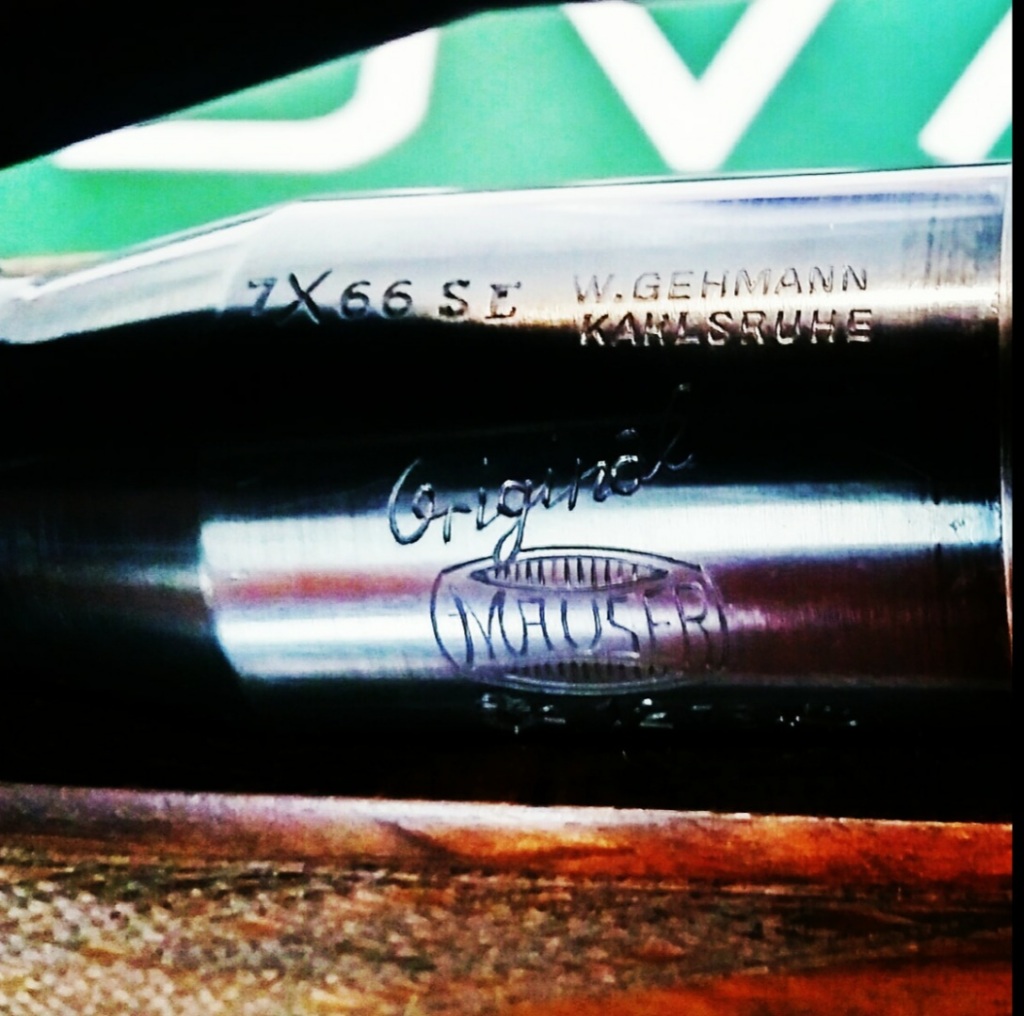
Finally, with great curiosity, we dedicated to the 130-grain Rhino Solid Shank. We’d heard a lot about these sturdy South African bullets, sold under license in Finland, so we couldn’t wait to test them . Last season we used 8mm bullets, 160 grains weight, launched at sidereal speeds by our 8x68S. We were pleasantly struck by intrinsic accuracy, consistency and undoubted terminal qualities. While we can’t count on dozens kills, all the game we shooted remained in place, anchored to the ground by incapacitating wide wounds, whithout excessive meat damage. It was therefore inevitable for us to test this thoroughbred horse, sure to achieve exceptional performance.
Results obtained during load development have somehow subverted some certainties and strengthened others. All bullets tested were accurate, effective and lethal, sensitive to lateral wind, docile in the recoil and tasty to shoot at the range; overall it was the most fun experience of the last few years, generating minimal stress on the rifle, shooter and cases.
Let’s see specifically results obtained.
- RWS Kegelspitz 121 grains .
We admit it shamelessly, we madly love these bullets. There is no caliber, weapon or load we have been disappointed.
The long bearing surface, the perfect mantle and core workmanship combined to Teutonic metallurgical knowledge are success guarantee. Slightly vintage design is disconcerting if compared to modern bullets with razor-sharp tips intended for hyperbolic speeds and distances, but the good old KS doesn’t care and goes on shining, with its consistency and reliability. We start from this bullet essentially for datas suitable on RWS manual, a great help for our study. Our main goal was to build a reliable cartridge suitable for roe deer and possibly chamois, within and no further than 300-350 meters. At the same time, seen the summer context, operating pressure had to be rather low, to avoid overpressure. We have had african temperatures in Summer, near 40 Celsius.

We used Horneber bresses, probably the best ever tested, surely better than the Ghemann and Sologne ones. The chosen powder, the usual RS60, proved to be effective and perfect for the purpose. Using Quick Load we easily created a simulation that barely reached 3800 bar, capable of 1000ms, just floating under 4000 joules, AOL 80 mm. cartridge filling was higher than 80%, optimal to achieve complete and residue-free combustion. Shooting range test was , thanks to a good dose of luck, more than satisfactory. Grouping was really good, almost perfect, with ridiculous recoil if compared to the one generated by 162-grain KS. Furthermore, muzzle flash absence proved to be very useful in summer hunting season, when roe deers exquisely leave woods in late evening hours, allowing to see game’s reaction after the shot without any problem. Zeroing the rifle 4 cm above the mouche at 100 meters, this cartridge allows the hunter to aim game’s silhouette up to 250 meters without compensation. The only qualms we harbored were about bullet’s fragile nature: some hunters withnessed unwatchable wounds on roe deers and other light games at medium range, while using milder calibers such as 7 × 57. However, seen design and the relatively low ballistic coefficient, this bullet had to be suitable beyond 150 meters without meat waste. Used for two seasons in summer roe deer season, the cartridge proved to be highly efficient. In particular, two episodes were more exciting than others. An adult male, just a few moments before complete darkness on a hot June evening, collapsed on the spot after being centered on the boiling room, just over 200 meters. Reaching the anschutz in the dark, I was surprised to find that exit hole was the right diameter, sign that bullet worked properly. To confirm this, internal damage was very modest and meat respected in the bests way possible.
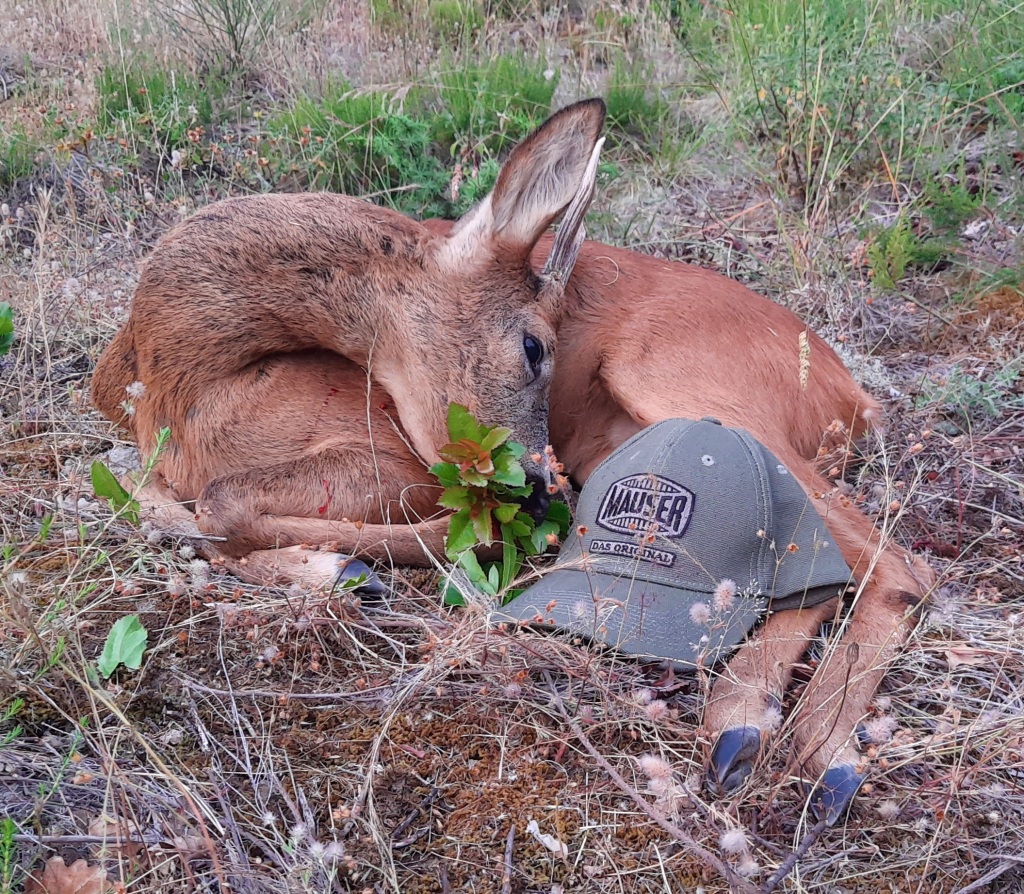
The following June, the driest ever, a young male was hitted just behind the right shoulder, slightly quartering in, a bit over 100 meters. There was no exit hole, even if entrance was rather generous, a clear sign of an immediate core and mantle separation. While butchlering the game, I found small portion of mantle and core under the skin, on the opposite side to the entrance hole. Meat damage was limited to internal organs, thanks to a careful shot placement.

Seen length and weight ratio, it’s unthinkable to employ the short KS with strong crosswinds over 250 meters, due to unpredictable drift. Low ballistic coefficient somewhat limits range effective, due to a rather rapid speed loss, while traditional structure recommends to aim at neck if used on big game, such as an adult fallow deer. Overall a very good cartridge, especially suitable for light game, fun to use seen modest recoil and remarkable accuracy. I would also feel confident to use it on chamois, while wind sensitivity could play some tricks.
FOLLOW US ON FACEBOOK:
https://www.facebook.com/groups/1100509527013603/?ref=share
NOSLER BALLISTIC TIP 120 GRANI.
It made us suffer, and not a little … seen the encouraging results obtained with KS, the accurate Ballistic Tip was the natural evolution of the concept. Excellent ballistic coefficient, conventional structure and proven effectiveness.
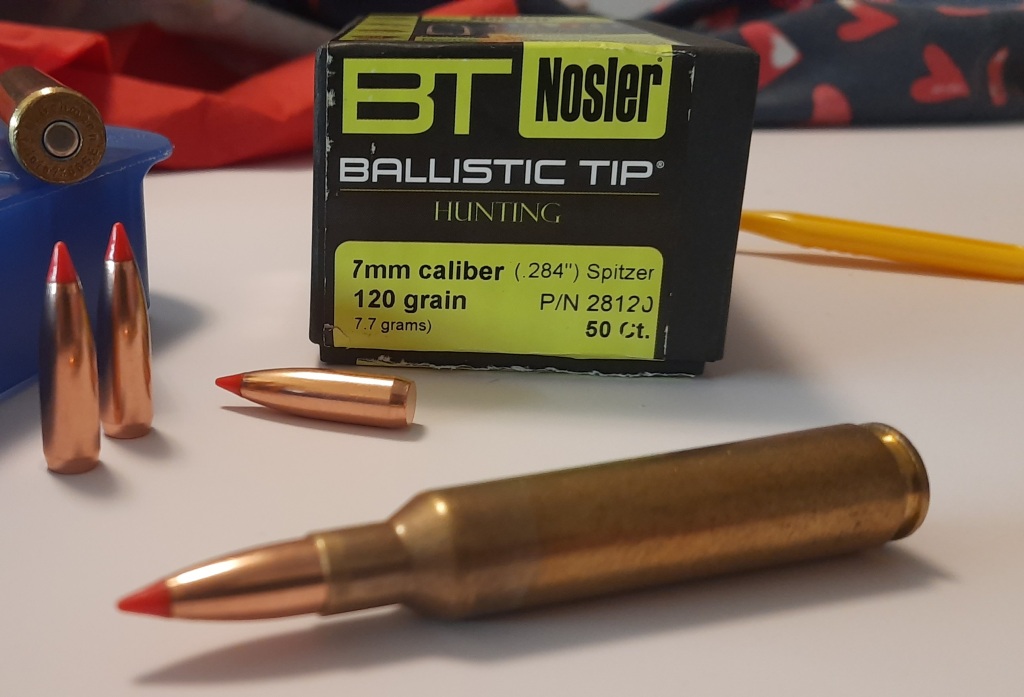
Depending on field’s results, it could be a good light game bullet or an excellent varmint bullet with explosive terminal ballistic. Simulations performed on Quickload promised impressive performances: speed close to 1100 ms, incredibly flat trajectory, good energy retention. It’s possible to use different powders to achieve excellent performance, but among those available we could only employ RS60 and MRP. N570 is too slow, being instead perfectly suitable for heavier ogives. Unfortunately, the excellent MRP is unobtainable from months, and the small amount remained allowed us to just set up some cartridges but not to find an optimal charge. The N160, also usable, failed badly; just varying a few tenths of a grain, it went from a very large grouping to a closer one but with considerable stress on shells causing blunt primers and overpressure signs. We went fro RS60, having a good stock of this powder. Reaching the goal of a tight and constant group, however, was anything but simple. As already observed, Nosler ogives easily tendy to generate higher pressures than European counterparts of same weight. I think it’s imputable to bullet’s structure, or slightly different tolerances respect to European manufacturers. These little differences can lead to negative experiences in those calibers that take internal ballistics to extreme. We have had the opportunity to experience several episodes of this kind over the years with well-built ogives such as Swift, Nosler, Speer, while we have never had the opportunity to verify them with Hornady and Sierra. Mindful of these episodes, our first recipe was a cautious charge, virtually a bit below 4000 bar, with 85 mm OAL, so to limit friction between bullet and collar as much as possible. Bullet’s lenght is perfect for the caliber, assuring that contact between rifling and ogive occurs when this one has completely abandoned the case: an extremely important aspect in this very nervous caliber, where long free bore acts as a combustion chamber and drastically lowers pressure curve. The Swiss powder used achieve a slower burning rate than powders originally used decades ago in DWM ammunitions, therefore there were no impediments to set up a recipe, with 400 bar of safety margin. Filling was close to 85%, complete combustion well before the bullet exits the muzzle. First test at shooting range was disastrous: the only shot exploded perfectly hit the target, in line with the zeroing previously done with 121gr KS bullet, but higher. Recoil did not bode well, hint confirmed by completely locked bolt handle. Opening the bolt was a challenge, being the case head completely flatten on the bolt face, primer ejected with deformed seat. Case to throw away. No other explanations are needed … 4000 bar were grossly underestimated. Seen the dangerous load, we decided to unload cartridges and try a 4 grains lighter load. Even in this case, however, pressure was decidedly excessive, with another useless case and bullet constantly floating over the zeroing. Frustrated by this second episode, the third charge was thus reduced by another 4 grains: Quick Load simulation heralded too low a pressure, perhaps dangerous. At this point it was imperative to solve this little puzzle. Finally, test at the range was successful. A good grouping, not very tight indeed but good for hunting with satisfaction. Despite having lightened 8 grains our load, filling was circa 80% , detected speed just below 990ms. Something in these beautiful red-tipped bullets, unequivocally generates high pressures that escape quick load’s predictive power in this particular caliber, and this must be kept very carefully. It should be noted that barrel was perfectly clean, charges maniacally weighed, powder almost new.
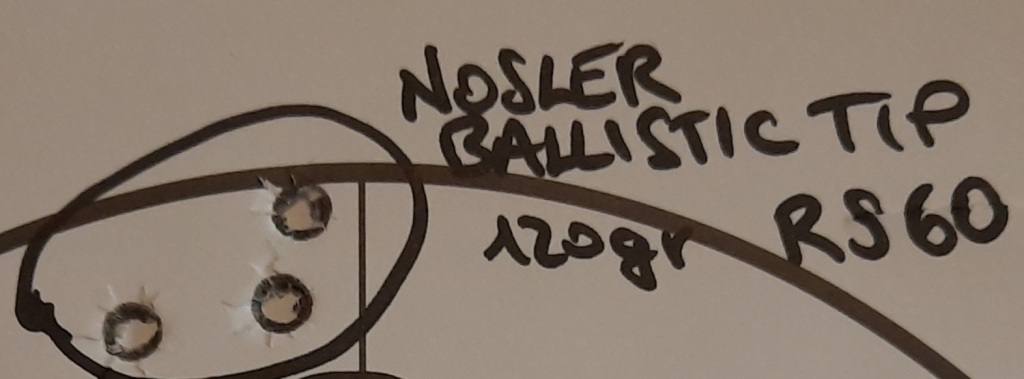
We have had the opportunity to use them very little for hunting, with quite short shots on light games. Meat damage was extensive due to the distance, nothing dramatic but notable enough to trust this load exclusively at long distance. Zeroing the weapon 4 cm above the mouche at 100 meters, cartridge is perfectly zeroed at 220 meters, with laughable drop at 300 meters and highly respectable energy retain. Always pay attention to wind, since it was quite nervous with intermittent side wind at the range, without however showing serious flaws.
Ultimately a good cartridge, well usable for chamois hunting if suffering recoil, or where flattest trajectory is sought. We promise to talk about it again when we’ll finally have in our hands the powder that more than others is in our opinion suitable for this ogive, the MRP. It’s remarkable that Nosler offers this bullet loaded in its brand new .28 Nosler, a modern version of our aging 7 × 66, launched at higher speed.
RHINO SOLID SHANK 130 GRAINS.
We decided to try these beautiful ogives after we saw them working on the mighty 8x68S. Out of curiosity we bought two 160 grain Solid Shank boxes, finding a good recipe on the first try: fine grouping, energy to sell with 5200 joules at the muzzle, stout structure and disconcerting terminal ballistics.

Having seen them working on some games, curiosity to try them in other calibers, especially high intensity ones, was unstoppable. Let’s spend a few words about these ogives’ particular structure. Born in South Africa and produced in Finland, they have an interesting engeniering: the front half has a lead core, bonded to a rather thick mantle. Rear bullet’s half, on the other hand, is a hard copper monolith, virtually non-deformable, capable of ensuring an exit hole or in any case an extremely deep penetration through bones, muscles and tissues. An unconventional structure already seen, used by other manufacturers too: Trophy Bonded Bear Claw had a similar design. What characterizes Rhino Solid Shank bullets is the apical portion engeniering, designed to open into four tough petals with square and sharp edges, a sort of hard burr able to assure large and deep permanent cavities even with light weight bullets.

This tenacious structure suggests the use on calibers expressing speed and energy of all respect, in order to obtain most of Solid Shank’s peculiarities.
We used the Moly Coated version, capable of greatly limiting rifling friction. This chemical process allows significant improvements, avoiding excessive barrel leading, allowing long shooting sessions without too many worries. Operating pressure is also milder respect to the same powder charge employed on identical bullet without moly treatment.

We initially decided to use the reliable N160. We don’t like this powder for hunting, since we were disappointed with temperature’s jumps between summer and winter, and in extreme humidity conditions. However, it remains a valid and very honest propellant, perfect for shooting at the range, easy to dose and capable of producing excellent cartridges. Although we had used all the precautions, it took us weeks to manage our handload. As always, we started with free bore measurement. Although light weight, the copper rear core determines a major length if compared to a lead bullet of same weight, and therefore a longer bearing surface. Furthermore, as repeatedly observed in this nervous aged caliber, it’s useful to employ bullets that engage rifling when they have completetly left collar so to avoid overpressure. Not having such this problem, we elaborated a simulation on Quick Load, still cautious but close to 3800 bar. That was just a solid starting point. From gained experience, we know that these calibers usually equipped with long and heavy barrels, work damn well with close to the maximum pressures, where barrel time is close to knot as much as possible. The excellent steel Mauser Europa were built with, maximizes vibrations trend that propagate after the shot.
With great surprise, however, the first range test was horrible: dirty down to the bottom cases, covered by semi-burnt powder and terribly smoky barrel. All this could solely depend by low pressure, unable to produce decent propellent’s combustion; Filling close to 90% gave us relative safe about a possible “mine effect”, but only relative .. In short, a load to be reviewed and corrected.

The second attempt saw a more robust charge, for an estimated 4100 bar pressure , filling close to 98%, complete combustion and muzzle velocity close to 1000ms. Once again, results were incredibly disappointing. Slightly tighter groups, shells always blackened up to about half body, a stronger recoil. We granted a final test to the generous N160, with compressed charge for an estimated 4300 bar pressure, 100% combustion, always according to, this time not too reliable, Quick Load. Again, results produced were not the wanted. Although shells were finally clean after each shot, sign that pressure was finally stable, grouping was still terrible, with bullets falling to the right and left of the mouche in demeaning way. Not to be caught with lowered breeches, we had set up a further new recipe using the faster RS60. Seen bullets’ behavior shown above, we immediately started with powder dose that reached 4100 bar: a small risk but rewarding. This last cartridge, with 85mm OAL, produced a very appreciable grouping, narrower than one obtained with Ballistic Tip. Producing rather moderate recoil and respectable consistency, we think it could be an excellent solution to hunt multiple size games.

If light Cup and Core bullets could blow or break if used on heavy game, the Solid Shanks with their leathery and penetrating structure are perfectly capable of clean kills at great distance, and very fast kills at closer range, without huge superficial wounds risk. Developing this recipe took some time but was a very exciting challenge. We believe that moly coated treatment deceived the excellent Quick Load, producing lower pressures than expected; anyway, resorting to a more modern and slightly lively powder we were able to deal with it. Introducing the moly treatment variable into the program, a greater simulation accuracy could be achieved, but it’s a function that we know very little, being this the very first time that we use moly coated ogives. We will test on the field 130 grain Solid Shank bullets this winter, hunting roe and fallow deer, sure to gather some very interesting data.
CONCLUSIONS .
Lighter 7 mm bullets, in spite of what some experts say, finds good and profitable application on light games when used in powerful 7×66 Vom Hofe. Without castrating this solid caliber, playing on bullet’s choice, shot placement and finally taking into account average shooting distance, it’s possible to hunt roe deer, chamois and fallow deer within human distances with manageable recoil, excellent terminal ballistics and meat respect. The worst light 7mm bullets’ enemy is the crosswind, which can affect accuracy over long distances. We have detected this within 100 meters at the range, this factor should not be underestimated when hunting in mountains.
We will soon try other ogives in this classic Teutonic cartridge, a colossus that continues to fascinate and make people talk about itself.
The timeless 7×66 Super Express Vom Hofe.

FOLLOW US ON INSTAGRAM:
https://instagram.com/mauser_club_italia?utm_medium=copy_link